Best Yamaha e-kits 2025: Top electronic drum sets from Yamaha for beginner, intermediate, and pro drummers
Use our expert guide to help you find the right Yamaha electronic drum set for you
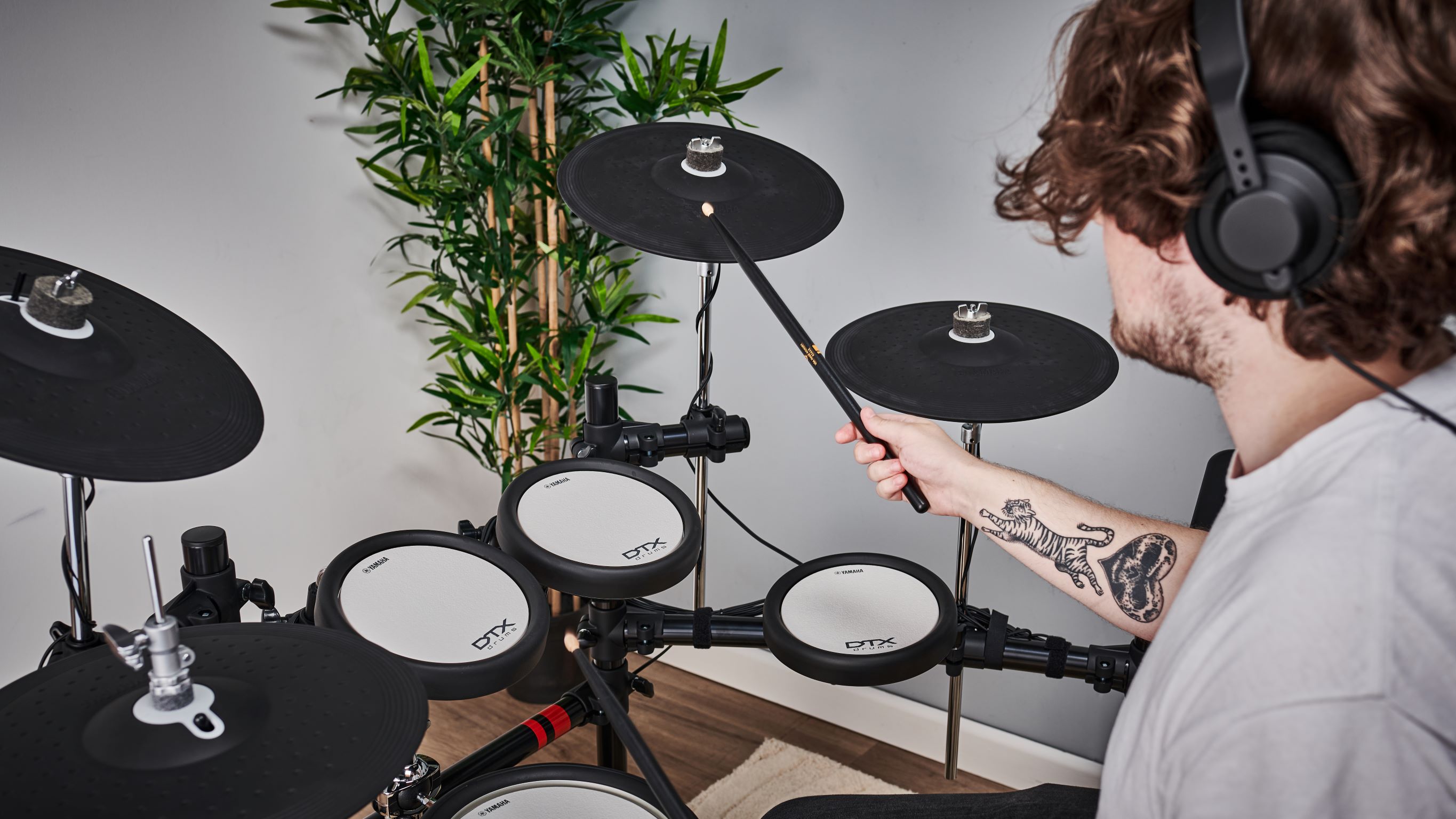
Japanese giant Yamaha is one of the 'big three' in the world of e-kits - alongside Roland and Alesis - and it offers a diverse range of electronic drum set-ups to suit everyone from beginner drummers to professional gigging and recording drummers. Whatever you're looking for, our round-up of the very best Yamaha's electronic drum sets should help you find the right kit.
Back in 1986, Yamaha was an early player in the electronic drum set market, unleashing their then incredibly futuristic PMC-1 kit. A decade on, the DTX name was born and now prefixes the entire Yamaha e-kit range, which currently features four levels of kit, with multiple configuration options between them.
As you'd expect, Yamaha’s decades at the forefront of acoustic drum kit manufacturing has had a big impact on the performance and build quality of its e-kits. On a practical level its electronic drum sets are notable for their reliable, adjustable hardware. They even benefit from Yamaha’s esteemed range of quality acoustic kits, many of which have been sampled meticulously for DTX modules.
So, if you've decided Yamaha is the way to go, this guide to the best Yamaha electronic drum sets will see you right.
Best Yamaha electronic drum sets: Our top picks
While the amount of choice in the Yamaha e-kit range isn't exactly vast, it's still hard to pick favourites. Every kit in this line-up has its advantages and disadvantages - but there are definitely one or two which we'd suggest you take a look at.
If you're only just starting out, then we'd have to recommend you check out the Yamaha DTX402K. Yes, it's the entry level DTX e-kit - but it offers a fantastic starting point for any budding drummer who wishes to get started in their playing career. Both pedals are sensor-based, so there's no bass drum pad to hit - and while that's not the best for right-foot development, it helps to reduce the residual playing noise massively. It's comfortable, sounds good, and won't cost the earth either. This kit has been around for a while now, so you're likely to find a good deal if you know where to look.
For those who have the budget, we'd recommend either the DTX8 or DTX10 ranges of electronic drum sets. Their spec sheets are vast and impressive, and the overall playing experience you get from them is second to none. They're both available with either mesh or TCS heads, and with real wood shells, are ready for the stage or studio. With the DTX10 series you get the DTX-PROX module - which is Yamaha's flagship - but you do pay that bit extra for it.
Best Yamaha electronic drum sets: Product guide
Specifications
Reasons to buy
Reasons to avoid
If you’re just beginning your drumming journey, the ideal electronic drum kit is one that’s sturdy enough to take a beating, is adjustable and comfortable to play and offers a selection of kits that sound decent in your headphones; too many additional features can be distracting.
Yamaha’s entry-level 402K is aimed squarely at beginners - and as such takes a spot in our best beginner electronic drum sets guide. For starters the compact kit takes up minimal space, while the silent bass drum pedal does wonders for neighbour-relations. The rack is height adjustable too, so you won’t outgrow it for a while, and pads can be positioned where you need them.
On the 402 module you’ll find 10 great-sounding kits covering every style from rock and jazz to dance and pop. Yamaha doesn’t scrimp on the education side of things either; the module comes loaded with 10 top training functions to help boost timing, speed and precision.
What’s more, pair the module with the DTX402 Touch app (Android/iOS) to unlock even more lessons, challenges and kit customisation tools. When you’re ready to show your playing to the world, load up the Rec’ n’ Share app to, you've guessed it, record and share your playing.
Read the full Yamaha DTX402K review
Specifications
Reasons to buy
Reasons to avoid
Yamaha's DTX6 series of electronic drum sets certainly ticks the boxes if you're looking for a setup which brings great sounds and plenty of tweakable parameters. This e-kit features Yamaha's own TCS silicone pads in the snare and tom positions, as well as one of the most comfortable bass drum towers we've tried. There's also an acoustic-style hi-hat, with a stand included - so there's a lot to be excited about.
The DTX Pro module provides many processing options, and thanks to the Kit Modifier controls on the top panel, you can apply and manipulate your sounds in real time. You can even import your own samples and map them to each pad at will. We do feel that the kit would benefit from a software editor to make this process easier, so until then you'll most likely need to get friendly with the instruction manual and make a good investment of time to really get to grips with the internal menus.
The economical design of the pads means that they do feel small - we’d like a larger snare and floor tom pad - but overall the DTX6K3-X has all the hallmarks of a quality e-drum set and is one of our top choices.
Read the full Yamaha DTX6K3-X review
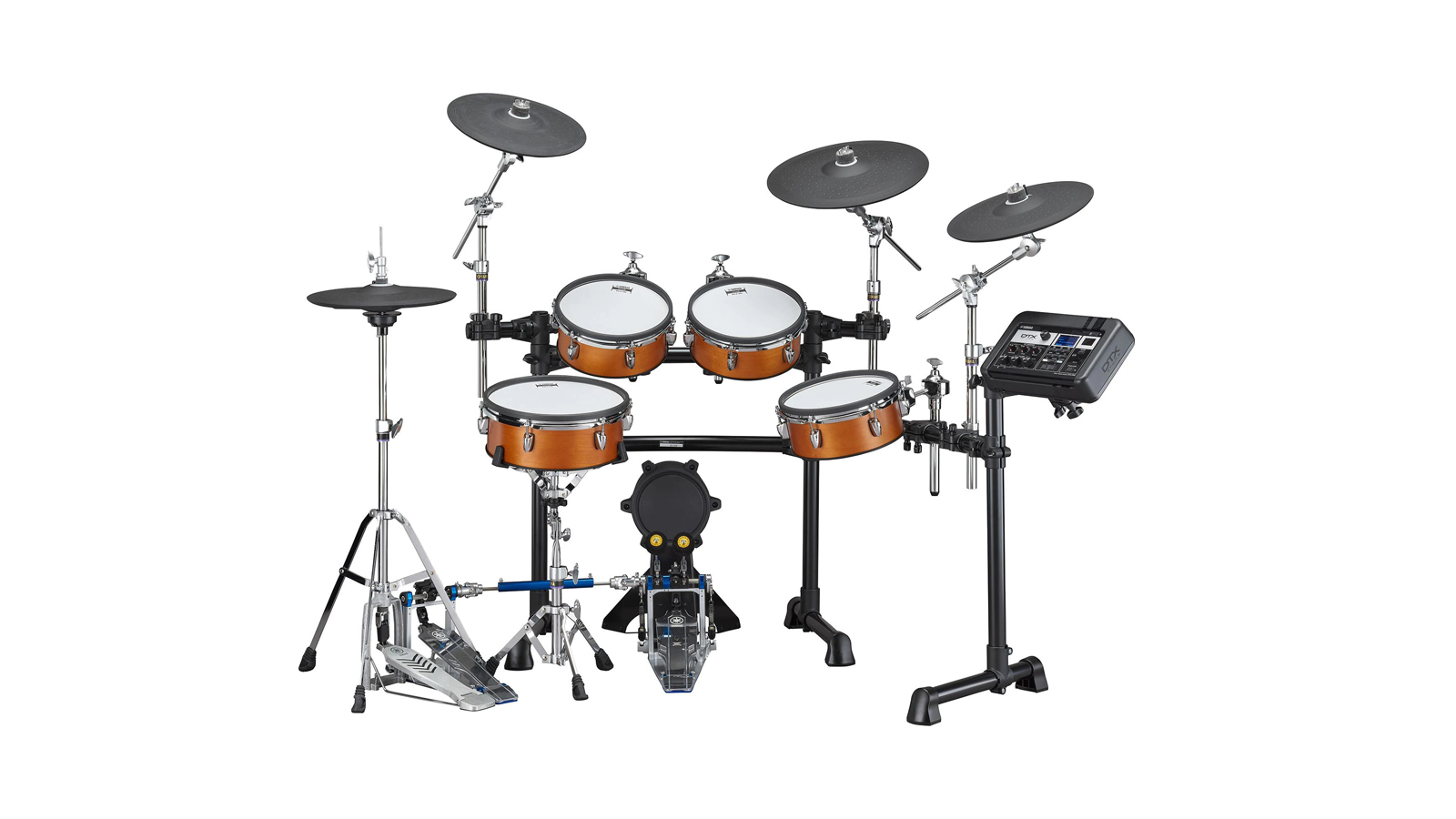
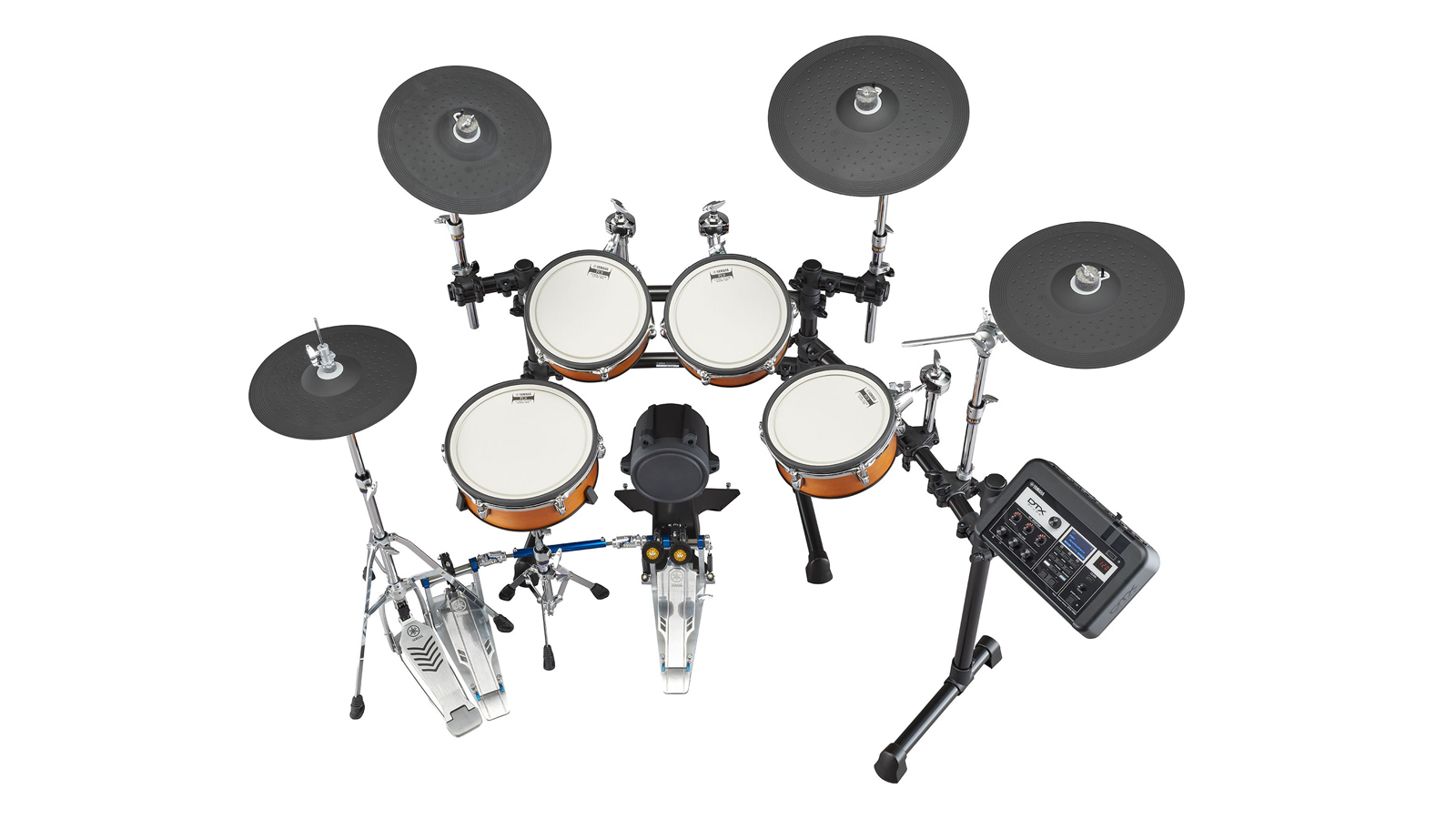
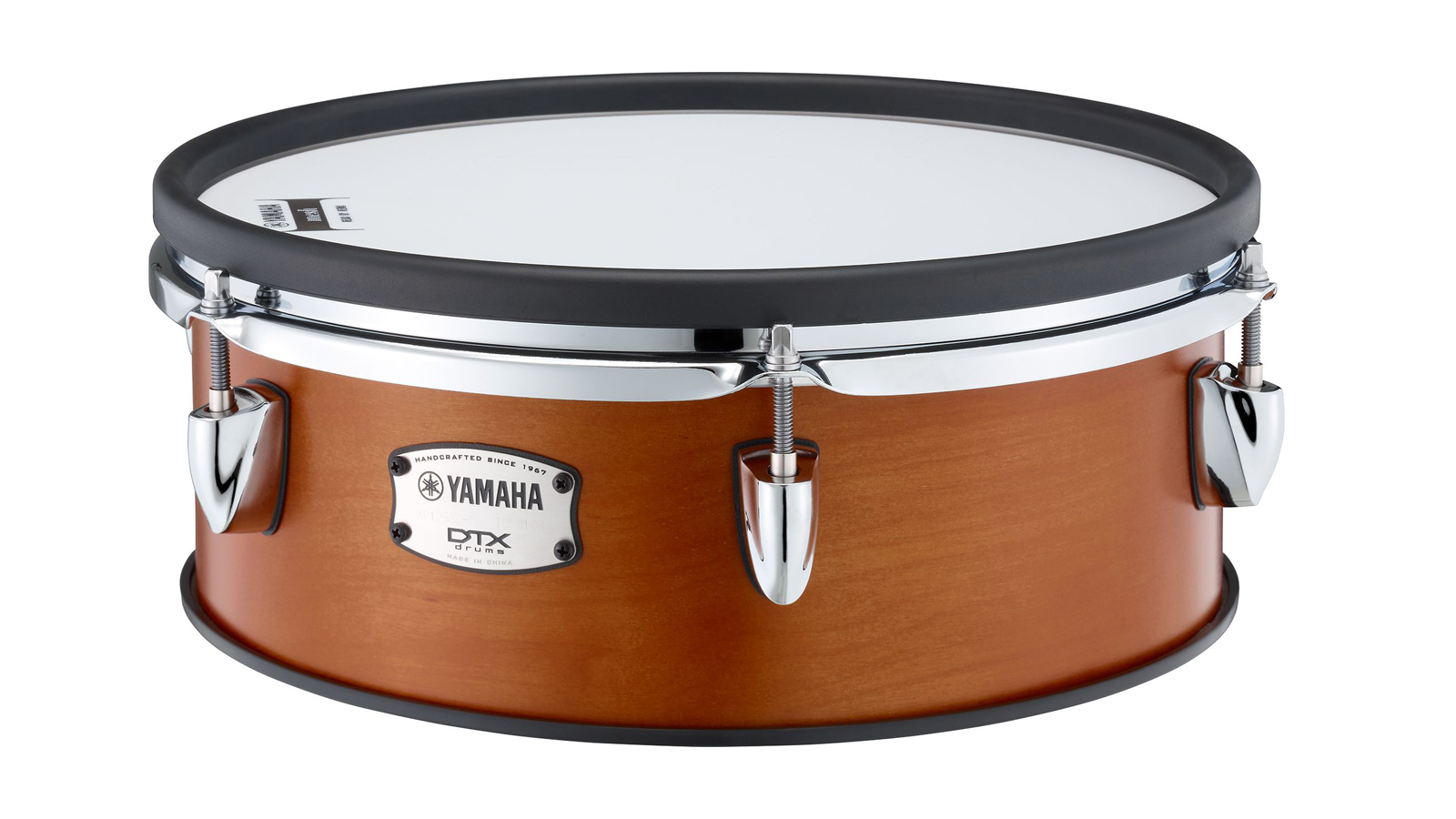
Specifications
Reasons to buy
Reasons to avoid
Yamaha electronic drum sets are some of the best in the business, and the DTX8 series doesn't stray from that theory in the slightest.
E-kits don't really impress anyone without a worthy module, and the DTX-PRO module included with this set is truly worthy. There's over 40 preset kits onboard, which are modelled on some of Yamaha's most iconic acoustic drum sets like the Recording Custom, and with ambience, compression and effect controls to make your drum tone pop just that little bit more either through your headphones or in a live or studio scenario, the collection of features at your fingertips is a thoroughly exciting one.
The 'M' suffix of the DTX8K-M means that mesh heads - made by industry giants Remo - are supplied on this kit. Yamaha has, as a rule, not supplied mesh heads on their e-kits until very recently, so this is a welcome option for anyone who wants that realistic, physical feedback while playing. This drum set is also available with Yamaha's own TCS (Textured Cellular Silicone) heads, which offer what some might say is a more realistic, acoustic-like playing feel with a little less rebound. For those, you'll have to pay more - but if they do it for you, then we'd say it's worth it.
Read the full Yamaha DTX8K-M review
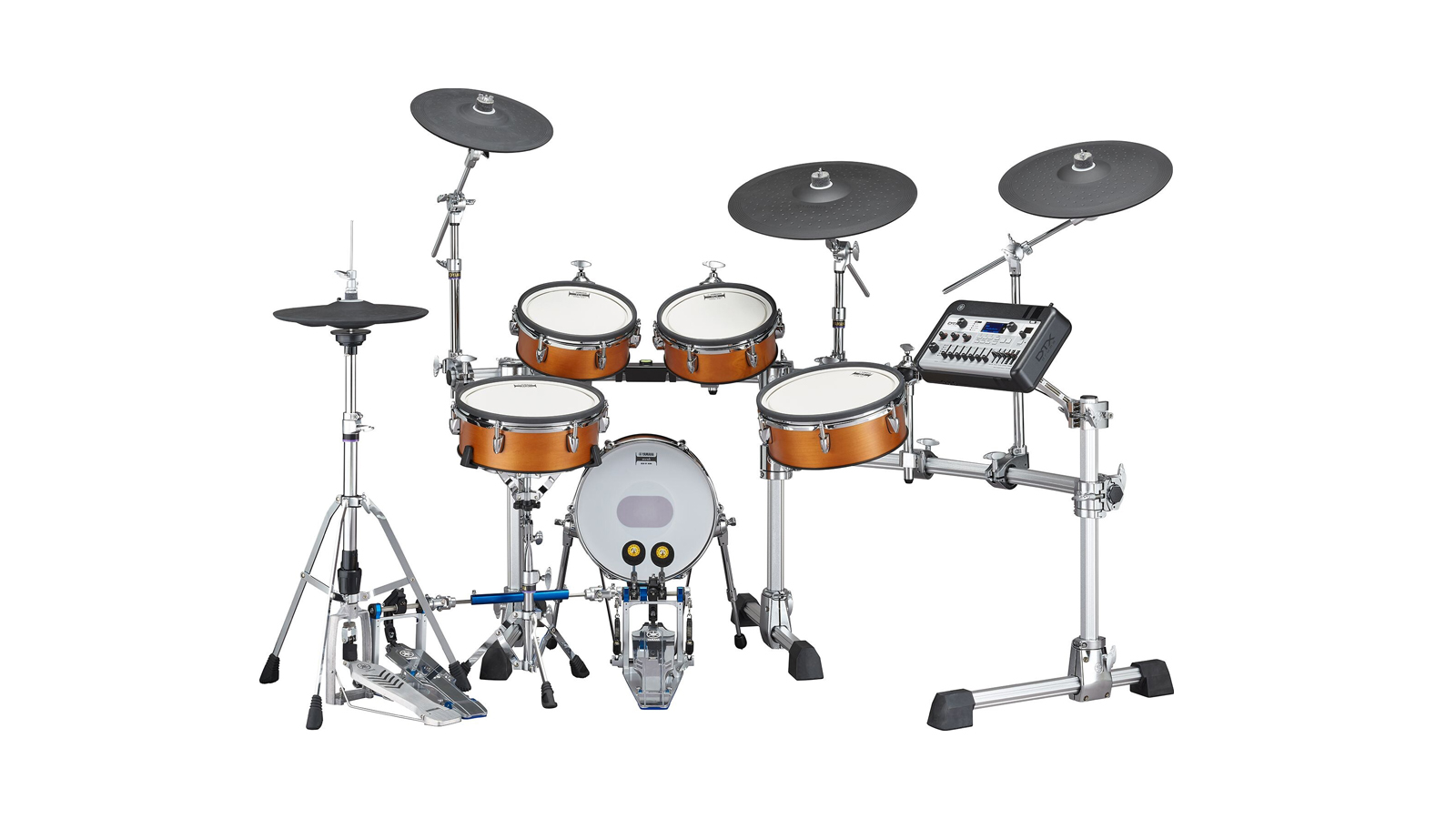
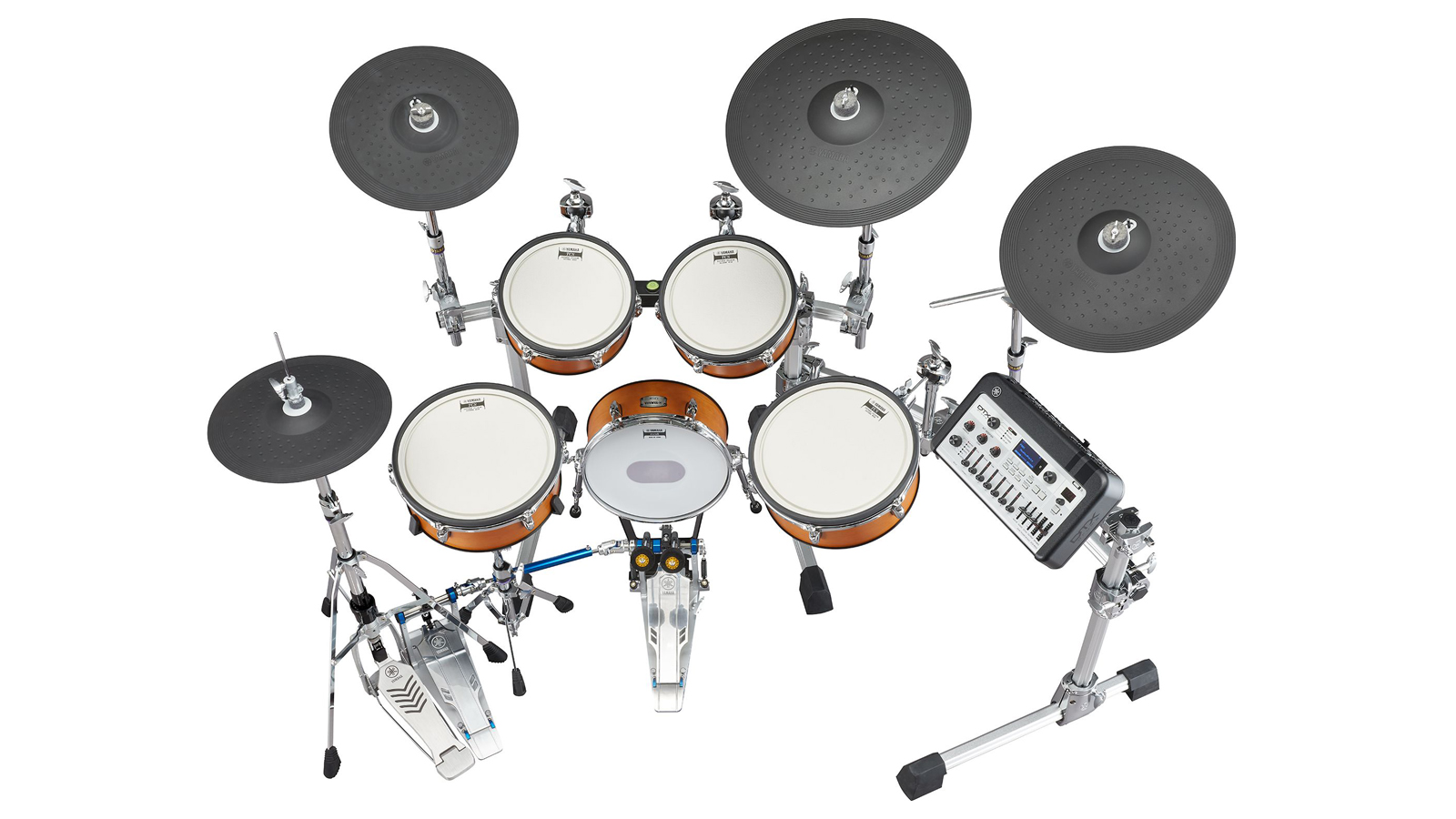

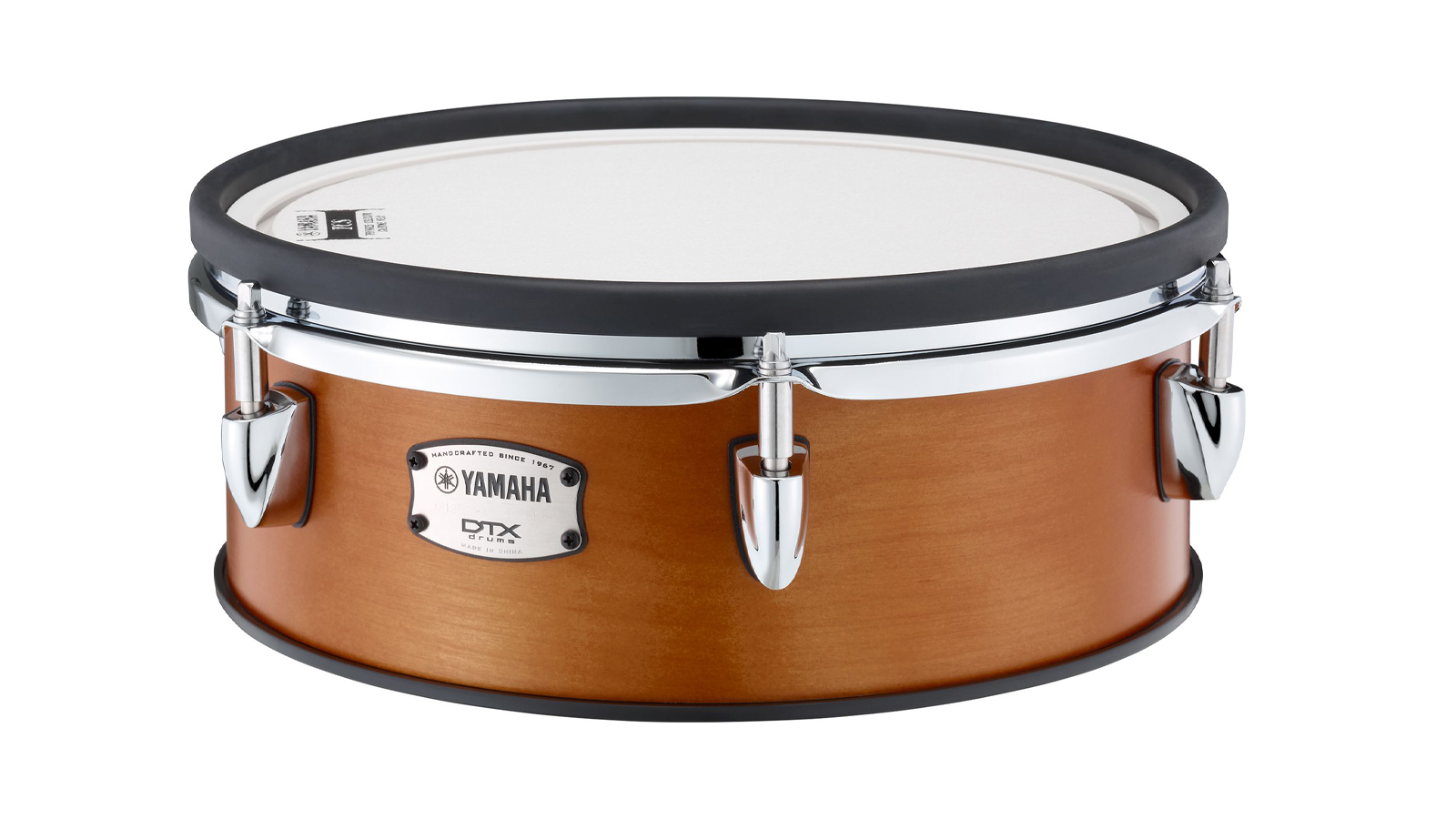
Specifications
Reasons to buy
Reasons to avoid
The DTX10 range is the flagship of the whole DTX series. It's the cream of the crop, so to speak - so if you're looking for the best Yamaha electronic drum set money can buy, then this is where it's at. This model in particular - the DTX10K-X - is the one we'd recommend you spend your money on.
Why, you ask? Well, where do we start?
The DTX10K-X offers a truly high-quality experience. The real wood shells - while making no difference to the playing feel - blur the lines between electronic and acoustic drums just that little bit further to make your overall playing experience just that little bit more 'real'. Yamaha's TCS (Textured Cellular Silicone) heads offer a highly realistic rebound and response which feels very close to a real drum head - offering just that bit less rebound than a mesh head. If you prefer mesh, you can buy the DTX10K-M, but we'd suggest you stick with the TCS for the best result.
While the pads on this e-kit aren't exactly life-sized, their relative sizes make playing the DTX10K-X feel particularly familiar. The array of dual- and tri-zone pads, some with 'positional sensing', also enables players to explore the usually 'acoustic-only' sounds beyond rim-shots and rim clicks.
The DTX-PROX module is the pièce de résistance. Providing a player with 70 fantastic preset kits to choose from and with space for up to 200 more user kits onboard, there's a huge amount of scope to customise and tweak all of your sounds and settings to fit you. Those kits are made up of over 400 samples, but again, you can add many more of your own. There's even a range of effects onboard, including ambience and compression, which can help to realise your drum tones and give them a breath of fresh air. Although the trigger settings needed a little bit of tweaking out of the box - and we needed to refer to the manual for this - it made our playing sound better, but also helped us understand the guts of the module in more depth.
Read the full Yamaha DTX10K-X review
Best Yamaha electronic drum sets: Buying advice
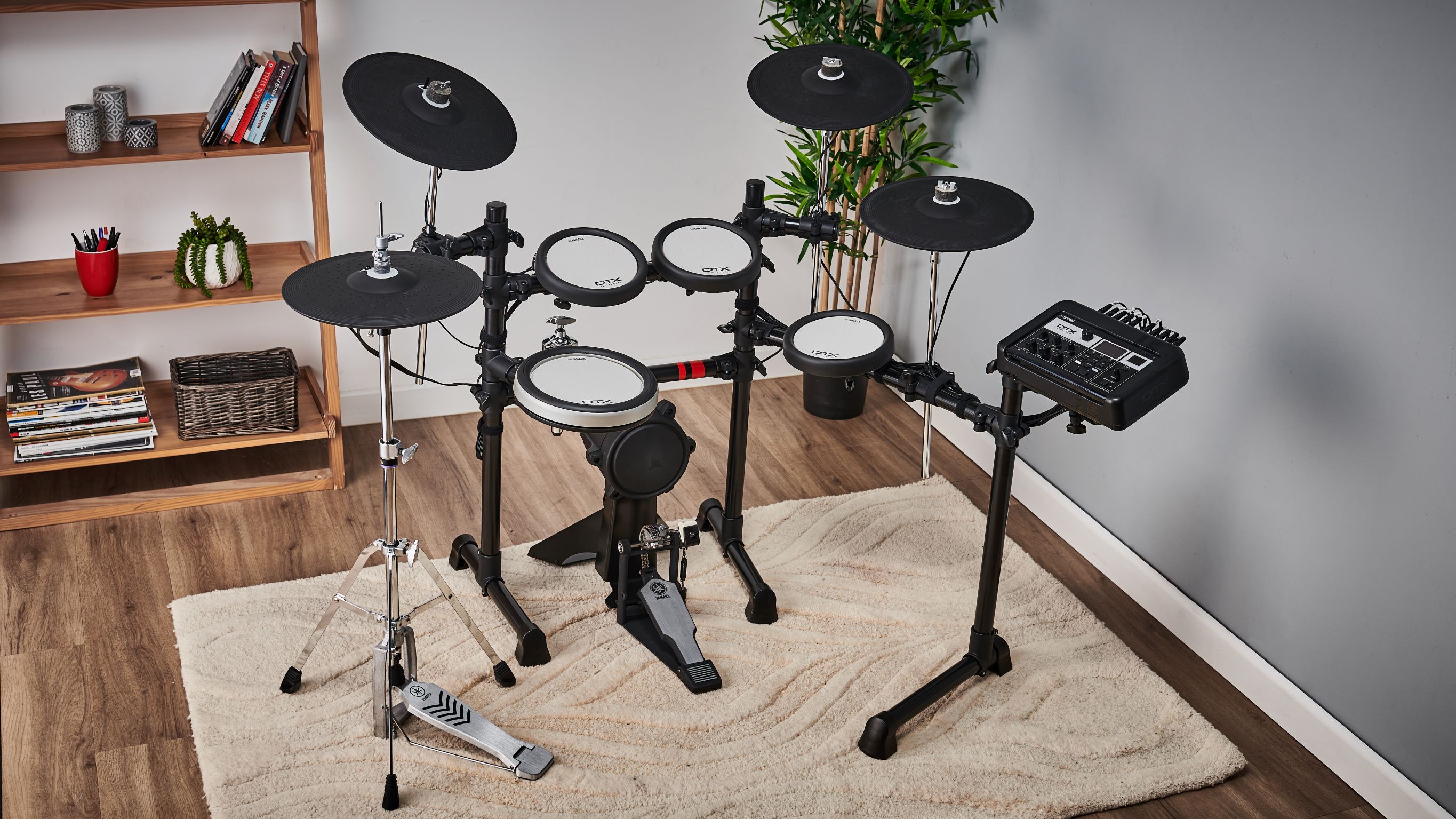
Why should I buy a Yamaha electronic drum set?
One of the things we always get asked is how Yamaha's kits stack up in the battle of the big three? In other words, exactly how do they stack up against other big players like Roland's electronic drum sets or Alesis electronic drum sets?
One key differential is that, rather than the mesh heads found on some of Roland's entry-level kits - and certainly on the company's intermediate to top-end kits - Yamaha offers its own material, known as Textured Cellular Silicone, or TCS. Designed to recreate the feel and rebound of traditional mylar acoustic drum heads, while also being pleasingly quiet, it’s a unique material, but it really works. These heads are found on Yamaha's DTX6, DTX8 and DTX10 series'.
Mesh heads are also available on those kits, so if you much prefer the extra rebound of a mesh drum head, that option is now on the table.
The Yamaha vs Roland debate has always been a hot one, with both companies offering a range of electronic kits for every level of drummer and budget, and with their own take on key technologies and pad design. In reality, both companies are pretty much neck-and-neck, so it comes down to whether you want the TCS heads or not.
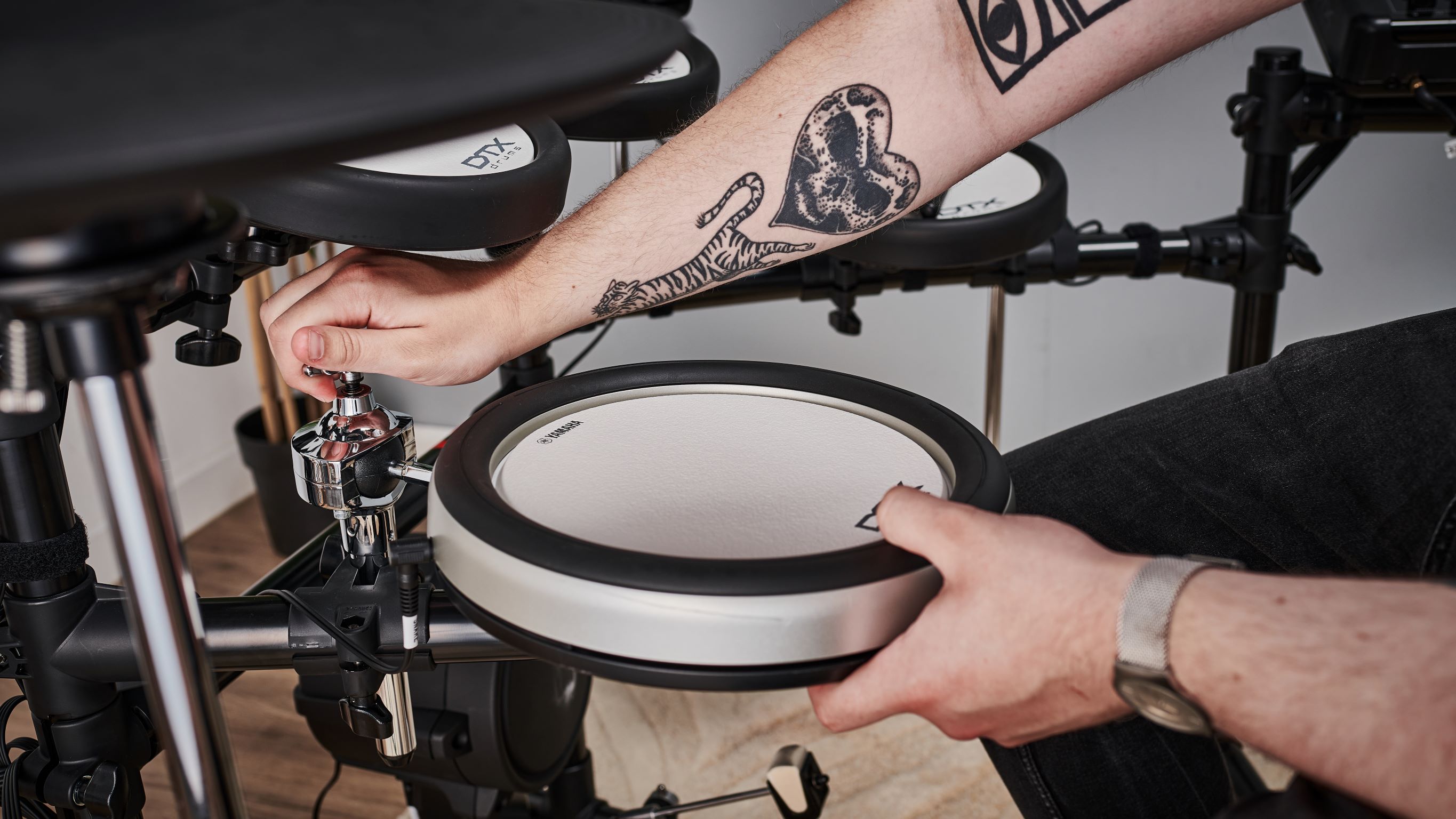
What do all these letters and numbers mean?
MusicRadar's got your back
We know that Yamahas code-like product names don’t exactly roll off the tongue, but figuring out which is which is a fairly simple task. Let us elaborate.
Don’t worry about deciphering the ‘DTX’ prefix - it’s the numbers we’re most interested in here. The hierarchy of Yamaha e-kits follows a fairly simple order - 4, 6, 8, and 10. The lower the number, the lower down the hierarchy it is.
The DTX402 is the last remaining e-kit to use an extended numerical suffix. This is because Yamaha produced kits such as the DTX432 and DTX482 within the same range - and these extra numbers were used, again, to differentiate between higher and lower models. The system has changed now - especially within the DTX8 and 10 ranges - where letters are used to denote differences in spec.
Although the names do still read like they’re written in code, it’s become much easier to figure out which is which - and once you’re in the right ballpark with your prospective new e-kit, finding the right one for you will be simple and enjoyable.
So, what's the EAD 10 then?
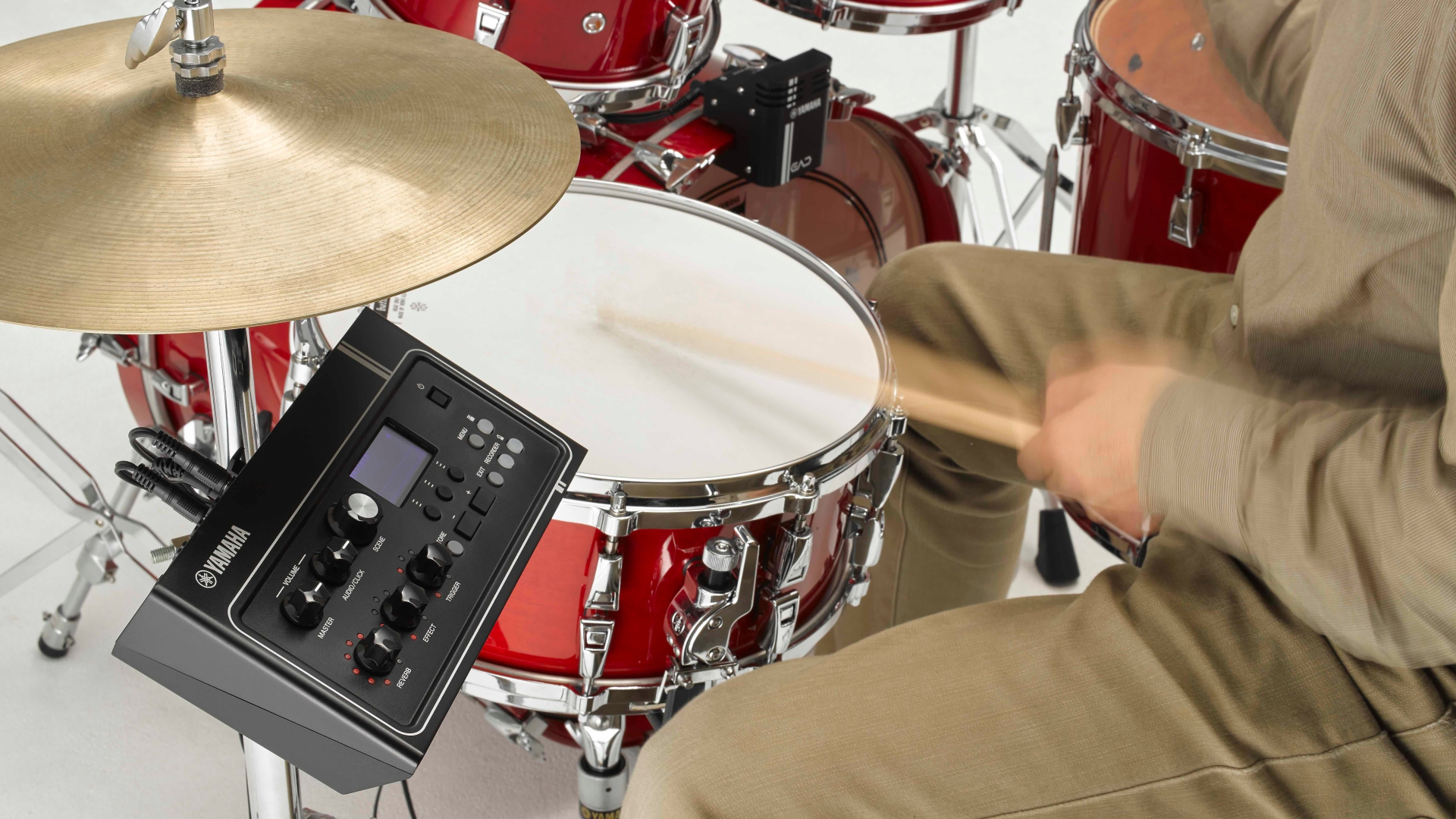
Yamaha has not always been a company which produces great sample pads and triggers. Most of the time, the industry standard has been either Roland or Alesis, but Yamaha's EAD 10 unit has definitely managed to shift the focus away from the others.
'Hybrid' is a word which can either create unbridled joy or quivering fear amongst drummers, so the EAD 10's fantastically simple approach to the hybrid side of the drumming world is a welcome one. In layman's terms, it helps to turn your acoustic drum set into an electronic one... kind of. It allows you to process and record your acoustic kit sound, while layering triggered sounds on top of that. You can also use Yamaha's Rec'n'Share app to create videos which use the EAD sounds, as well as jam along to, speed-up, slow-down or loop music.
All you need to do is attach the trigger section to the top of your bass drum (or anywhere else you want it), and then tweak your reverb, effect and trigger settings from the included module. This module is quite similar to that of an e-kit, so if you're used to using one, this should be a piece of cake.
There's left and right outputs to feed out to an audio interface or PA system if that's your thing, 50 onboard 'scenes' - which are presets including reverb, an 'other' effect and a trigger setting. There's 11 different reverb types and 21 effects here too, all at your disposal - and while not quite an e-kit, it blurs the lines spectacularly. You can red our full Yamaha EAD 10 review here.
Find out more about how we test music gear and services at MusicRadar.
Related buying guides
- The best electronic drum sets under $500/£500
- These are the best gifts for drummers
- Find the best drumsticks for you
- Listen up with the best studio headphones for musicians
- Alesis Nitro Mesh kit vs Yamaha DTX402K vs Roland TD-1K
- Step up with the best bass drum pedals
Get the MusicRadar Newsletter
Want all the hottest music and gear news, reviews, deals, features and more, direct to your inbox? Sign up here.
I'm MusicRadar's eCommerce Editor. In addition to testing the latest music gear, with a particular focus on electronic drums, it's my job to manage the 300+ buyer's guides on MusicRadar and help musicians find the right gear for them at the best prices. I dabble with guitar, but my main instrument is the drums, which I have been playing for 24 years. I've been a part of the music gear industry for 20 years, including 7 years as Editor of the UK's best-selling drum magazine Rhythm, and 5 years as a freelance music writer, during which time I worked with the world's biggest instrument brands including Roland, Boss, Laney and Natal.
